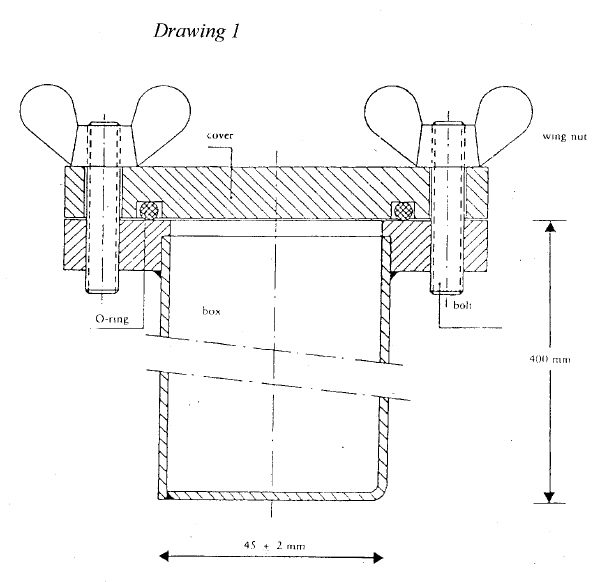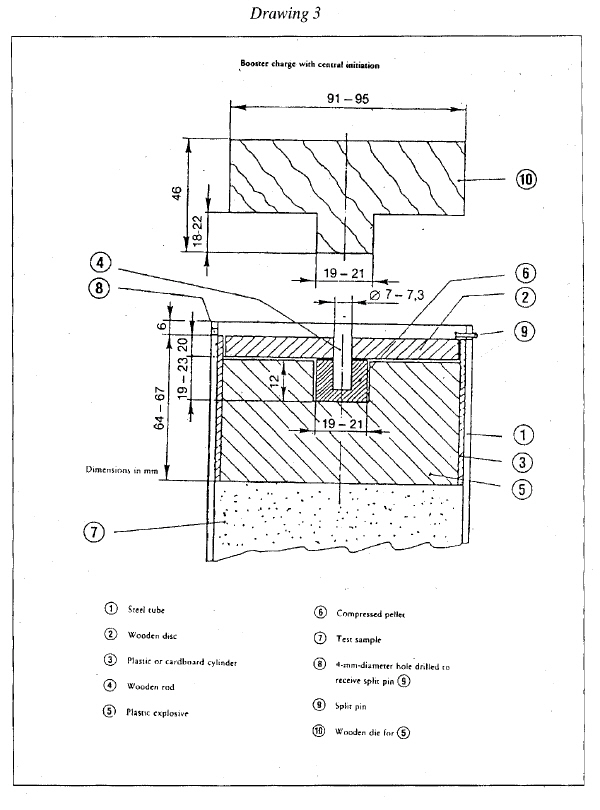SCHEDULE 2E+W+SDETONATION RESISTANCE TEST
B. DETERMINATION OF RESISTANCE TO DETONATIONE+W+S
12. Evaluation of test results.E+W+S
If, and only if, in each firing, the crushing of at least one lead cylinder is less than 5%, the sample shall be determined to be resistant to detonation. Otherwise it shall be determined to be not resistant to detonation.
Note 1: In so far as it is consistent with the procedures set down in [F1Annex 3 to Regulation (EC) No 2003/2003 of the European Parliament and of the Council relating to fertilisers] for the testing of straight ammonium nitrate fertilisers an alternative method in accordance with this note may be adopted for the application of thermal cycling—
(1) Principle and definition
Heat the sample from ambient temperature to 50 °C and maintain at this temperature for a period of one hour (phase at 50 °C). Then cool the sample until a temperature of 25 °C is achieved and maintain at that temperature for one hour (phase at 25 °C). The combination of the successive phases at 50 °C and 25 °C forms one thermal cycle. After being subjected to the required number of thermal cycles, the test sample is held at a temperature of 20 ± 3 °C pending the execution of the detonation test.
(2) Apparatus
Two different methods using ovens can be utilised for conditioning the test samples. Method 1 employs a single oven capable of being thermostatically controlled to temperatures of 50 °C and 25 °C and with a minimum heating and cooling rate of 10 °C/h. Method 2 employs 2 ovens, one thermostatically controlled to 50 °C and the other controlled to 25 °C.
(3) Procedure
(a)Divide approximately 20 kg of the sample of relevant ammonium nitrate material into eight roughly equal portions and place them in identical polythene bags made air-tight using a heat sealing device.
(b)Insert a suitable thermocouple into one of the portions through the wall of the polythene bag and tape it into place.
(c)Place the bags in an oven at 50 °C and once the thermocouple indicates that the portions have attained this temperature maintain them at that temperature for one hour.
(d)The bags must then either be removed from the oven and be placed in another oven at 25 °C (method 2) or the oven thermostat must be reset to 25 °C (method 1).
(e)Once the portions have cooled to 25 °C they must be maintained at that temperature for one hour.
(f)Repeat the thermal cycles four more times and then maintain the bags and their contents at a temperature of 20 ± 3 °C pending execution of the detonation tests.
(g)Discard the material from the bag containing the thermocouple and perform the detonation tests on the material from the other seven bags.
Note 2: In so far as it is consistent with the procedures set down in [F2Annex 3 to Regulation (EC) No 2003/2003 of the European Parliament and of the Council relating to fertilisers] for the testing of straight ammonium nitrate fertilisers an alternative plastic explosive may be used that contains 86% to 90% cyclonite, with a density of between 1,550 to 1,650 kg/ m3, and a detonation velocity of between 8,000 to 8,400 m/s, Mass 500 ± 1 gram.
Textual Amendments
F1Words in Sch. 2 para. 12 substituted (15.3.2019) by The Fertilisers and Ammonium Nitrate Material (Amendment) (EU Exit) Regulations 2019 (S.I. 2019/601), regs. 1(2), 3
F2Words in Sch. 2 para. 12 substituted (15.3.2019) by The Fertilisers and Ammonium Nitrate Material (Amendment) (EU Exit) Regulations 2019 (S.I. 2019/601), regs. 1(2), 3



